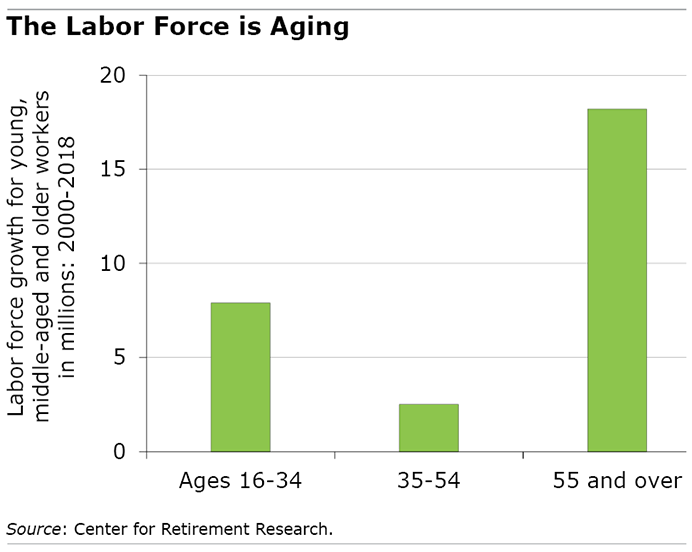
How Eager are Employers to Hire Boomers?
Older Americans’ share of the labor force has doubled since the early 1990s, and they constitute roughly one in four workers today.
But their dominance is mainly an artifact of the baby boomers’ demographic bulge moving through the labor force and says little about how employers view the growing ranks of aging workers.
 Employers’ willingness to hire or retain older workers, especially when someone younger is available, is an important issue for a couple related reasons. Boomers are under increasing pressure to work as long as possible to improve their finances before retiring. It’s also easier for many to work well into their 60s since people are living longer and technological advances have reduced the physical requirements for some types of work.
Employers’ willingness to hire or retain older workers, especially when someone younger is available, is an important issue for a couple related reasons. Boomers are under increasing pressure to work as long as possible to improve their finances before retiring. It’s also easier for many to work well into their 60s since people are living longer and technological advances have reduced the physical requirements for some types of work.
But do employers want boomers on the payroll?
A study by Damir Cosic at the Congressional Budget Office and C. Eugene Steuerle at the Urban Institute finds some evidence that employers increasingly view them as pretty good substitutes for workers in their prime whose age – the mid-30s to mid-50s – and experience puts them at peak productivity. What distinguishes this research is its focus on understanding the demand for older workers, a departure from the many studies describing the changes in their labor supply.
The analysis turned on whether the growth in the older labor force has affected prime-aged workers’ wages. If, for example, their wages are increasing relative to the wages of workers over 55, this may indicate that employers are more willing to hire workers in their prime, because they have qualities the older workers lack.
If, however, the younger workers’ wages are declining relative to boomers’ wages as the growing supply of older workers puts some downward pressure on pay, employers may view the boomers as acceptable substitutes for their younger counterparts and are equally willing to employ them.
The researchers found that employers viewed older workers as increasingly attractive substitutes over the period 2000 through 2018. This trend was clearly evident in several specific industries, including utilities, real estate, information, government, finance, transportation, and wholesale.
However, the question driving this study – Is the demand for boomers keeping up with the aging of the U.S. labor force? – remains unsettled, because the researchers also found some contradictory evidence in their other analyses.
This study is a start on answering an important question, but they said conclusions will have to wait for future research.
To read this study, authored by Damir Cosic and C. Eugene Steuerle, see “Is Demand for Older Workers Adjusting to an Aging Labor Force?”
The research reported herein was derived in whole or in part from research activities performed pursuant to a grant from the U.S. Social Security Administration (SSA) funded as part of the Retirement and Disability Research Consortium. The opinions and conclusions expressed are solely those of the authors and do not represent the opinions or policy of SSA, any agency of the federal government, or Boston College. Neither the United States Government nor any agency thereof, nor any of their employees, make any warranty, express or implied, or assumes any legal liability or responsibility for the accuracy, completeness, or usefulness of the contents of this report. Reference herein to any specific commercial product, process or service by trade name, trademark, manufacturer, or otherwise does not necessarily constitute or imply endorsement, recommendation or favoring by the United States Government or any agency thereof.
Comments are closed.







Hiring a boomer means you’re infinitely less likely to hear the word “whatever” as a response to a request.